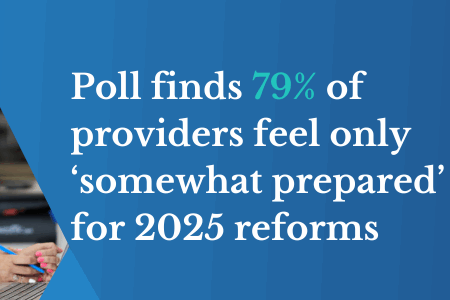What workforce ramifications will the Federal Budget have?
May 19, 2015 | Aged Care Finance

The release of a new federal budget heralds a great deal of conversation across various sectors in Australia – and especially in aged care. This is a sector that faces no small number of challenges, most of which require significant funding to address.
Last week, the federal government came forward with the latest budget, which in turn drew quick responses from aged care. Many leading industry bodies and providers expressed concern with the changes, especially a funding cut to a vital area – the workforce
A staffing challenge
Of all the issues currently at play in Australian aged care – including accommodation supply and adequate home care options – a capable workforce is perhaps one of the biggest. The sector requires a substantial number of workers to meet the demands of the growing elderly population – workers that aren’t available.
Like many industries across the globe, aged care is another area that faces a lack of suitable candidates – staff with the right skillsets to care for elderly Australians.
A cut to workforce funding
According to Australian Ageing Agenda, a $40.2 million cut to the workforce fund in aged care along with tax changes will make it harder to meet workforce demand in the near future. Not-for-profit (NFP) providers especially are concerned about the changes, with regards to attracting and subsequently retaining staff.
The renamed Aged Care Workforce Development Fund will be targeted to support training and skilling opportunities in the sector, however funding has been reduced substantially. Instead of the prior $260 million over four years, the sector will now see $220 million. With the sector already facing workforce issues, funding cuts could prove to be an issue.
Capping the fringe benefit tax (FBT)
Soon after the release of the budget, Aged and Community Services Australia (ACSA) explained that the decision to cap the FBT as a tax saving was disappointing, as it would have been preferable to consider the policy issue as part of broader taxation reform.
Adjunct Professor John Kelly, CEO of ACSA, stated that those in the sector who currently access the FBT are lower income staff. He also said that most take advantage of it at “very small levels”.
Aged care is another [sector] that faces a lack of suitable candidates
“This was a significant benefit in the NFP aged care sector and setting the cap so low will make it harder to recruit staff at a time when we need to significantly increase the aged care workforce,” he said.
“Based on projections for service growth just in the next eight years alone, it is estimated that there will need to be an additional 55,770 aged care workers needed during this short period.”
Cuts here will certainly make it difficult to secure such a large number of workers – staff that are becoming increasingly necessary to the sector.
Meeting the needs of the ageing population
Like ACSA, Leading Age Services Australia (LASA) also came forward about the changes in the budget, noting the need for further funding in home care. CEO of LASA Victoria Trevor Carr said that the $73 million investment from the government in home care was a “drop in the ocean” when considering just how great the need for home care services is.
“In the next 15 years, Victoria’s over-70 population will grow to 14 per cent and well over one million people,” he said.
He went on to explain how the population of people over 70 in Victoria alone will grow to 14 per cent (over one million), with regional growth higher than the rest of the state. It’s certainly a difficult issue.
Providers may want to consider the benefits of greater financial sustainability through ACFI education. This is a source of funding that could prove essential for the aged care sector, helping providers to ensure funding is less of an issue.
What do you think are the biggest opportunities for success in the aged care industry today? Please contact us and let us know!
 Aged care requires adequate funding.
Aged care requires adequate funding.

